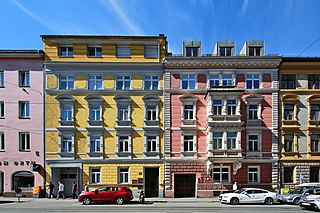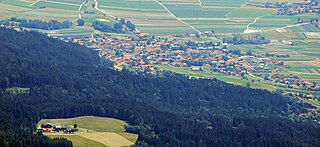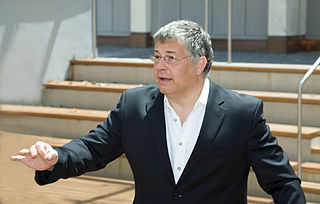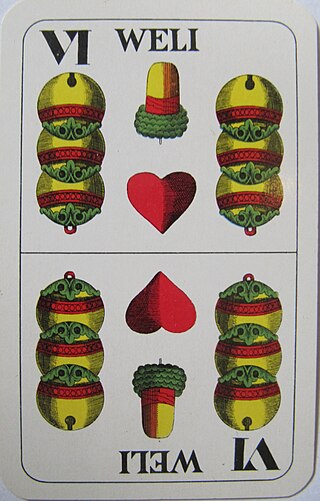Related Research Articles

Innsbruck is the capital of Tyrol and the fifth-largest city in Austria. On the River Inn, at its junction with the Wipp Valley, which provides access to the Brenner Pass 30 km (19 mi) to the south, it had a population of 132,493 in 2018.

Seefeld in Tirol is an old farming village, now a major tourist resort, in Innsbruck-Land District in the Austrian state of Tyrol with a local population of 3,312. The village is located about 17 km (11 mi) northwest of Innsbruck on a plateau between the Wetterstein mountains and the Karwendel on a historic road from Mittenwald to Innsbruck that has been important since the Middle Ages. It was first mentioned in 1022 and since the 14th century has been a pilgrimage site, benefiting not only from the visit of numerous pilgrims but also from its stacking rights as a trading station between Augsburg and the Venice. Also since the 14th century, Tyrolean shale oil has been extracted in the area. Seefeld was a popular holiday resort even before 1900 and, since the 1930s, has been a well known winter sports centres and amongst the most popular tourist resorts in Austria. The municipality, which has been the venue for several Winter Olympics Games, is the home village of Anton Seelos, the inventor of the parallel turn.

Absam is a municipality in the Innsbruck-Land District, Tyrol (Austria) situated at an altitude of 632 m, which had an area of 51.92 km2 and 6,776 inhabitants as January 2015.

Thaur is a municipality in the district of Innsbruck-Land in the Austrian state of Tyrol located 5 km east of Innsbruck between Rum, Austria and Hall in Tirol.

Karl Heinz is an Austrian architect. With two colleagues, as the firm Heinz & Mathoi & Streli, he built private homes in the alpine landscape of Tyrol, schools, offices and public buildings, among others.
The Kaiserjäger, were formed in 1895 as four normal infantry regiments within the Common Army of Austria-Hungary. Despite the name "Tirol" in its title its members were not just recruited from the crown land of Tyrol but also from other parts of the monarchy. The regiments were disbanded in 1918 with the end of the k.u.k. monarchy. The word Jäger is a characteristic term used for light infantry or light infantrymen in a German-speaking context.

The Tyrolean Unterland is that part of the Austrian state of Tyrol east of its capital city, Innsbruck, excluding East Tyrol.

The Tyrolean Folk Art Museum is considered one of the finest regional heritage museums in Europe. Located next to the Hofkirche and across from the Hofburg in the Altstadt section of Innsbruck, Austria, the museum contains the most important collection of cultural artifacts from the Tyrol region.

Tyrol is a historical region in the Alps of Northern Italy and western Austria. The area was historically the core of the County of Tyrol, part of the Holy Roman Empire, Austrian Empire and Austria-Hungary, from its formation in the 12th century until 1919. In 1919, following World War I and the dissolution of Austria-Hungary, it was divided into two modern administrative parts through the Treaty of Saint-Germain-en-Laye:

The Standschützen were originally rifle guilds and rifle companies that had been formed in the 15th and 16th centuries, and were involved time and again in military operations within the borders of the Austrian County of Tyrol. A Standschütze was a member of a Schützenstand, into which he was enrolled, which automatically committed him to the voluntary, military protection of the state of Tyrol. In effect they were a type of Tyrolean local militia or home guard.

UMIT Tirol - Private University for Health Sciences and Health Technology sees itself as a health university and is located in Hall in Tirol. It was founded in 2001 in Innsbruck under the name Private University of Medical Computer Science and Technology Tirol. In connection with the expansion of the health sciences in 2004, the university was re-named UMIT – Private University for Health Sciences, Medical Informatics and Technology. Today, it's a private university under the University Accreditation Act UniAkkG BGBl. The university is run by Tyrol and the University of Innsbruck.

Bernhard Sieberer is an Austrian choirmaster and conductor.

The Weli, formerly Welli, is a playing card used in the Salzburg and William Tell card decks, which are Austrian regional patterns of the German-suited playing cards. It has the value of 6 of Bells and, in the South Tyrol variant of the card game, Watten, it is the only 6 used and can, in addition to its own suit of Bells, join the trump suits of Acorns, Hearts and Leaves. In all other variants of Watten, the 7 of Bells is the Weli.

The Tirol Panorama with the Museum of the Imperial Infantry or Tirol Panorama is a museum in Innsbruck in the Austrian state of Tyrol, which is mainly important because it houses the Innsbruck Giant Panorama Painting.

Bieten, Laubbieten, Lab bietn or Labbieten or Bavarian Poker is a card game that is popular in the Austrian Tyrol and the Bavarian Prealps. It used to be a game frequently played by timber rafters and muleteers. It can be seen as a precursor to the traditional Tyrolean game of Perlaggen. The unusual feature of Bieten is the nature of the competition. The players have the option, even if they have a poor hand, of persuading their opponent(s) to cave in through skilful bidding (Bieten) and bluffing.

Watten, regionally also called Waddn, Watteln or Wattlung, is a card game that is mainly played in Bavaria, Austria, Switzerland and South Tyrol, including Ladinia. There are several main variants: Bavarian, Bohemian, South Tyrolean (Stichwatten), (Austrian) Tyrolean, Kritisch and Blind Watten. It is usually a 4-player game, which is "by far the most interesting", but it may also be played by 2 or 3 players. According to Parlett, Watten is "hard to describe [but] fun to play and easy to learn."

Perlaggen, formerly Perlagg-Spiel, is a traditional card game which is mainly played in the regions of South Tyrol in Italy, the Tyrolean Oberland and the Innsbruck areas of Austria. It is the only card game to have been recognised by UNESCO as an item of Intangible Cultural Heritage.
Jörg Streli was an Austrian architect and academic teacher at the Innsbruck University. With two colleagues, as the firm Heinz & Mathoi & Streli, he built private homes in the alpine landscape of Tyrol, schools, offices and public buildings, among others. He was also president of the architecture section of the Ingenieur- und Architektenkammer für Tirol und Vorarlberg.

Gilten or Giltspiel is a "very old" Austrian card game for four players, playing in partnership, with 32 German-suited cards of the William Tell pattern. Despite its age, it is still played locally in parts of Austria today. It is a trick-taking game which involves betting on the outcome and certain card combinations.
The Andreas Hofer Kreuzer, also called the Hofer Kreuzer or Sandwirtszwanziger, was the name of the 20- and 1-kreuzer coins that were minted during the Tyrolean Rebellion in Hall in Tirol in 1809. The obverse depicts the Tyrolean Eagle and the inscription Gefürstete Grafschaft Tirol; the reverse shows the nominal value.
References
- 1 2 Auer 2015, p. cover.
- ↑ TIROL DREISSIG // 25.08.2016, broadcast by Tirol TV. Retrieved 5 Aug 2018
- ↑ Application for heritage status for the card game of Perlaggen at unesco.at. Retrieved 19 March 2021.
- ↑ Die Insignien eines besonderen Königs im Tiroler Volkskunstmuseum zum Bewundern. at www.meinbezirk.at. Retrieved 13 Jul 2018